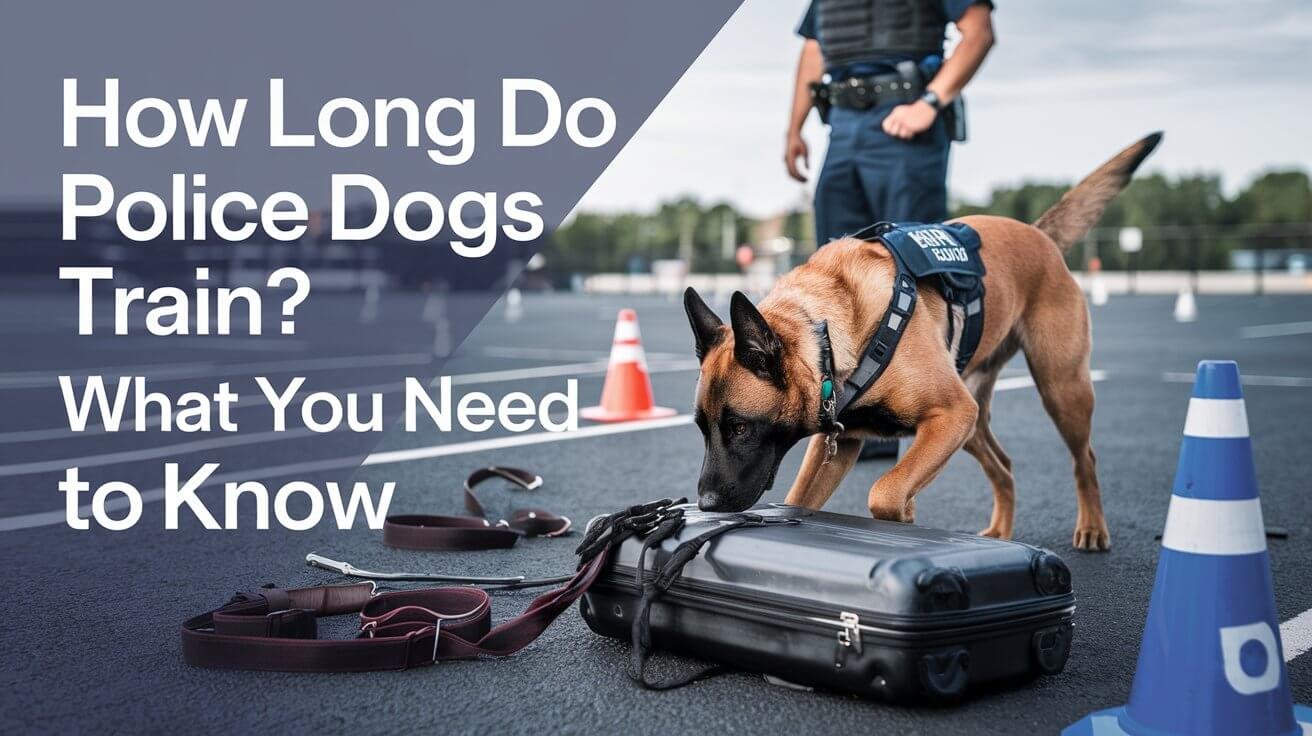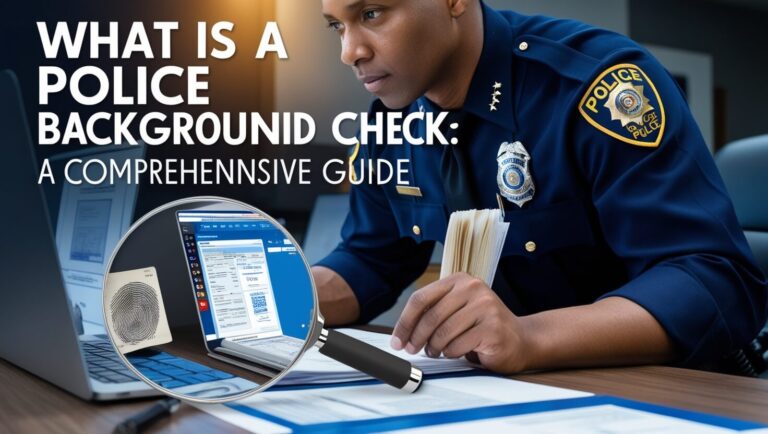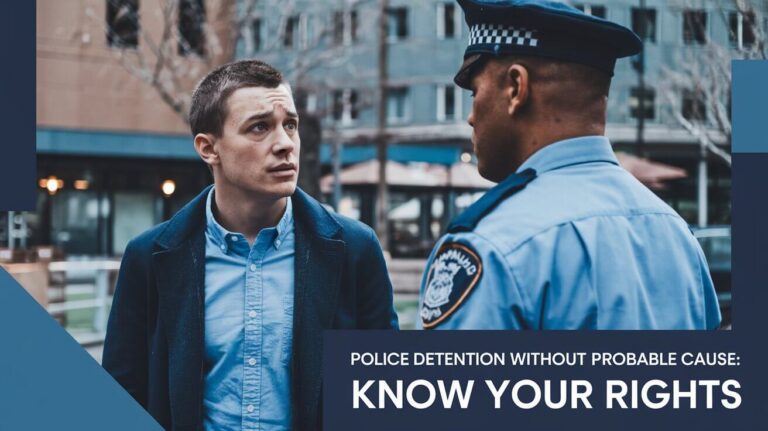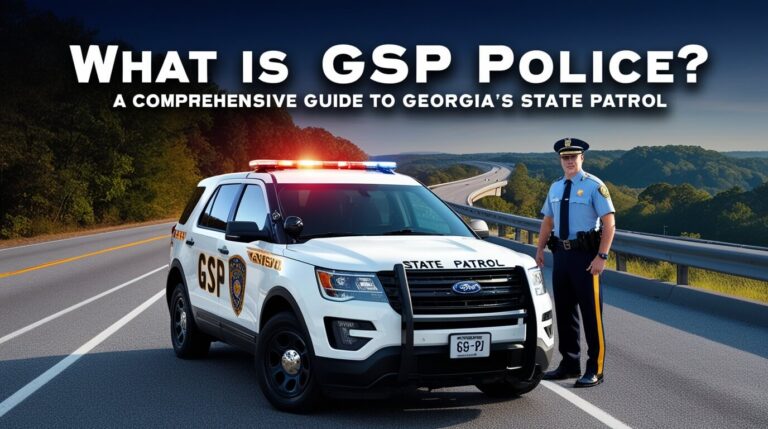How Long Do Police Dogs Have To Train For? What You Need To Know

Police dogs are key in law enforcement. Their training is vital for them to do their jobs well. The time it takes to train a police dog varies based on their role. Basic training usually lasts 4–6 months.
This initial training, known as K9 training, is the start of their career. It prepares them for their future tasks.
Police dogs go through many exercises and drills. These prepare them for different situations. They learn basic obedience and specialized detection skills.
This training is complex and takes a lot of time. With skilled trainers and handlers, police dogs become important to law enforcement. It shows how critical K9 training is.
Basic Police Dog Training Duration
Police dog training programs teach dogs to help law enforcement. It starts with socializing puppies to new things. Dogster says police dogs start training at 8-10 weeks old.
This early training helps them feel calm and confident. It’s key for their future work.
K9 training uses many techniques, like basic obedience and physical exercises. As puppies get older, they focus more on getting stronger and more agile. The goal is to make them strong partners for police.
Components of Police Dog Training
- Basic obedience training: teaching puppies to respond to commands and develop good behavior
- Physical conditioning: building strength, agility, and endurance
- Socialization: exposing puppies to new environments, people, and experiences
Police dogs become valuable assets with the right training. The training lasts 13 weeks. It includes many types of training and tests.
Understanding early socialization and training shows the hard work in making these dogs. It’s a big effort to create such amazing partners.
Police Dog Selection Criteria
Choosing police dogs is a detailed process. It looks at their breed, temperament, and traits. The aim is to pick dogs that are bold, focused, and eager to please. The Northland K-9 Foundation says police dogs are picked for their breed, temperament, and traits. They look for dogs that are bold, focused, and eager to please.
Dog temperament testing is a key part of this process. It checks how a dog acts in different situations. This test is vital to see if a dog is right for police work. Police dog breeds like Belgian Malinois and Dutch Shepherds are chosen for their high energy and small size. This makes them great for working in tight spots.
Several factors are considered when picking police dogs. These include the dog’s breed, temperament, and traits. The dog’s size, coat, and energy level are also important. Dog temperament testing is a key part of the selection process. It helps assess how a dog will react in different situations.
| Breed | Temperament | Characteristics |
|---|---|---|
| Belgian Malinois | Confident, focused, driven | High drive, trainable, smaller size |
| Dutch Shepherd | Confident, focused, driven | High drive, trainable, smaller size |
Core Law Enforcement Training Components
Police dogs get tough training to help law enforcement. The Salt Lake City Police Department focuses on patrol, tracking, and catching suspects. These skills are key for K9 teams to do their job well.
Training teaches dogs to listen, move through places, and find scents. The USPCA and NAPWDA set standards for K-9 teams to keep up their skills. This shows how important it is to keep training them.
Patrol Work Skills
Patrol skills are vital for police dogs. They learn to obey commands and move through different places. This training helps them work well in cities and the countryside.
Tracking and Search Operations
Tracking and search skills are big parts of police dog training. Dogs learn to follow smells to find people or clues. The NPCA guides this training, stressing the need for regular practice.
| Training Component | Description |
|---|---|
| Patrol Work Skills | Teaching dogs to respond to commands and navigate environments |
| Tracking and Search Operations | Teaching dogs to follow scents and locate suspects or evidence |
| Suspect Apprehension Methods | Teaching dogs to safely and effectively apprehend suspects |
With these key training areas, police dog programs make K9 teams very effective. These teams help law enforcement keep communities safe and secure.
Specialized Detection Training Periods
Police dogs go through tough training to learn detection skills. Dogster says they can learn to find things like drugs or bombs. This training is key for police, as it lets dogs find specific items, helping in crime prevention.
Training dogs to sniff out certain smells is a big part of their job. K9 detection methods help dogs improve their smell skills. Dogs also learn to find missing people or suspects in search and rescue work.
Some important parts of police dog training include:
- Teaching dogs to recognize specific scents, such as narcotics or explosives
- Developing dogs’ sense of smell through various exercises and activities
- Training dogs to respond to commands and signals in different environments
With proper training, police dogs become top-notch detectors. They help police solve crimes. The success rate at Lackland Air Force Base for military dogs is about 50%. This shows how hard police dog training is. But, it’s worth it for law enforcement to have a strong ally in the fight against crime.
Handler and Police Dog Team Formation
Police dog handler training is key in forming K9 teams. The bond between a dog and its handler is built on trust, respect, and clear communication. The Northland K-9 Foundation says that police dogs and handlers train together to create a strong bond and communication system.
A great K9 instructor teaches both academics and problem-solving. Building a strong relationship between a dog and handler is essential. With proper training, they can become a powerful team, keeping communities safe.
Bond Development Phase
In the bond development phase, handlers learn to communicate with their dogs. They use verbal and non-verbal cues. This phase is vital for a strong dog and handler relationship.
Communication System Training
Communication training is a big part of police dog handler training. Handlers must learn to communicate clearly with their dogs. This training is key to a strong bond and the success of the K9 team.
| Training Phase | Duration | Objective |
|---|---|---|
| Bond Development Phase | Several weeks | Establish a strong bond between dog and handler |
| Communication System Training | Several months | Teach handlers how to effectively communicate with their dogs |
| Field Exercise Requirements | Ongoing | Train dogs and handlers to work together in a variety of environments and situations |
How Long Do Police Dogs Have to Train For: Complete Timeline
Police dog training is a detailed process that needs patience, dedication, and a solid plan. It starts with an initial training phase, followed by ongoing training and certification. Law enforcement agencies say this initial training usually lasts between eight months and a year.
The time it takes to train a police dog varies based on its role. Dogs in law enforcement are trained for specific tasks. They learn skills like patrol work, tracking, and detection. This training is designed to make them effective in their duties.
Here are some key milestones in the police dog training timeline:
- Initial training: 8 months to 1 year
- Ongoing training and certification: throughout the dog’s working life
- Specialized training: varies depending on the specific task
The police dog training timeline is vital for their development as law enforcement officers. With proper training and socialization, they become confident and capable partners. For example, the Illinois State Police Canine Section offers various training programs. These include a 10-week full-service canine training course and a six-week narcotic only course.
Understanding the police dog training timeline, law enforcement agencies can prepare their canine officers well. This ensures they can perform their duties effectively.
Certification Requirements and Testing Phases
Police dog certification is key to a dog’s career. It ensures they meet training standards and can do their job well. Dogs must pass performance evaluations to show their skills in obedience and detection. These tests vary by state but all dogs must meet certain K9 certification requirements.
The certification process has several steps. First, dogs are tested in obedience, aggression control, and detection. The obedience test has three parts: heeling, walking, and distance. Each part is judged on whether the dog passes or fails.
The aggression control test has four parts that must be passed before moving on. The gunfire phase uses .38 caliber handguns and .38 blank ammunition only.
Testing Phases
- Obedience certification test: three phases – heeling, walking, and distance
- Aggression control certification test: four phases
- Gunfire phase: .38 caliber handguns and .38 blank ammunition only
Certification is good for one year. If a team fails a test, they can try again at a later date. The National Police Canine Association suggests 16 hours of training a month to keep dogs and handlers at their best.
| Certification | Validity | Reapplication |
|---|---|---|
| APCA Certifications | One year from the date of issue | Allowed at the next convenient time and date |
| NPCA Certifications | One year from the date of issue | Allowed at the next convenient time and date |
Advanced Skill Development Timeframes
Police dogs need constant training to keep their skills sharp. The Northland K-9 Foundation says this training refines their abilities and adds new ones. With the right training, their skills can grow, and they can work better.
Training police dogs is very important. It keeps them current with new methods. This makes them a big help to police. Some key parts of advanced training include:
- Refining existing skills, such as detection and patrol work
- Introducing new skills, such as advanced detection or tracking
- Enhancing dog training timeframes to optimize performance
- Focusing on police dog advanced training and K9 skill development to improve overall effectiveness
Law enforcement agencies benefit a lot from training their dogs. It keeps the dogs ready to help and keeps communities safe. With the right training, police dogs can make a big difference in keeping people safe.
| Training Program | Duration | Price |
|---|---|---|
| 6-week Police K9 Trainer Course | 6 weeks | $5,850 |
| 8-week Police K9 Trainer Course | 8 weeks | $7,775 |
| 12-week Police K9 Trainer Course | 12 weeks | $9,950 |
Ongoing Training Requirements
Police dogs need constant training to stay sharp and certified. The Salt Lake City Police Department says police dog ongoing training is key. It keeps dogs current with new techniques and methods. This includes K9 maintenance training to improve their skills and learn new ones.
The aim of dog skill enhancement programs is to keep improving a dog’s performance. This means checking their skills and finding areas to get better. With the right training, police dogs can keep helping law enforcement. They help make communities safer and more secure.
- Regular assessment periods to evaluate a dog’s performance and behavior
- Maintenance training schedules to ensure dogs stay up-to-date with the latest techniques and methods
- Skill enhancement programs to refine their skills and introduce new ones
Law enforcement agencies should focus on ongoing training and maintenance. This ensures police dogs stay effective and certified. It helps make communities safer and more secure.
Final Verdict
Police dog training is key to law enforcement, needing lots of time and money. These dogs learn from puppyhood to advanced training. They get better at finding things, tracking, and catching suspects.
The K9 training makes sure police dogs can help keep us safe. They work with officers to protect our communities.
Police dogs have been helping for over a century. Today, they use new tech like GPS collars. Their health and training are always a top priority.
This focus on their skills shows how much we value them. It’s amazing to see how a puppy becomes a skilled police dog. These dogs are essential in keeping our laws in order.
Commonly Asked Queries
How long do police dogs have to train for?
Police dogs train for different tasks, so the time varies. They start with a 4-month basic training. Then, they get ongoing training and certification.
What is the duration of the initial puppy development phase for police dogs?
The puppy phase is key for police dogs. It’s when they learn to be calm and confident. They get used to new things, people, and places.
What are the basic obedience requirements for police dogs?
Basic obedience starts early for police dogs. They learn to follow commands and behave well. This is the base for more advanced training later.
How long does the physical conditioning timeline last for police dogs?
As puppies grow, their training gets tougher. They focus on getting stronger, more agile, and enduring. With the right training, they become great partners for police.
What are the criteria for selecting police dogs?
Choosing police dogs is strict. They look at breed, temperament, and traits. Dogs need to be confident, focused, and eager to please.
What are the core law enforcement training components for police dogs?
Police dogs learn many skills. They do patrol work, track, and help catch suspects. These are key parts of their training.
What is the duration of specialized detection training for police dogs?
Detection training is vital for police dogs. They learn to find things like drugs or explosives. This training is specific and important.
How long does the bond development phase take between a police dog and handler?
Building a bond between dog and handler takes time. It’s based on trust, respect, and clear communication. They also practice together in real situations.
How long does the certification process take for police dogs?
Getting certified is a big deal for police dogs. It shows they can do their job well. They go through tests to check their skills and behavior.
What is the timeline for advanced skill development for police dogs?
Police dogs need to keep learning to stay good at their job. They get new training to keep up with the latest methods. This keeps them certified and effective.
How often do police dogs require ongoing training and maintenance?
Police dogs need to keep training to stay sharp. They get regular updates and assessments. This keeps them ready for their duties.






